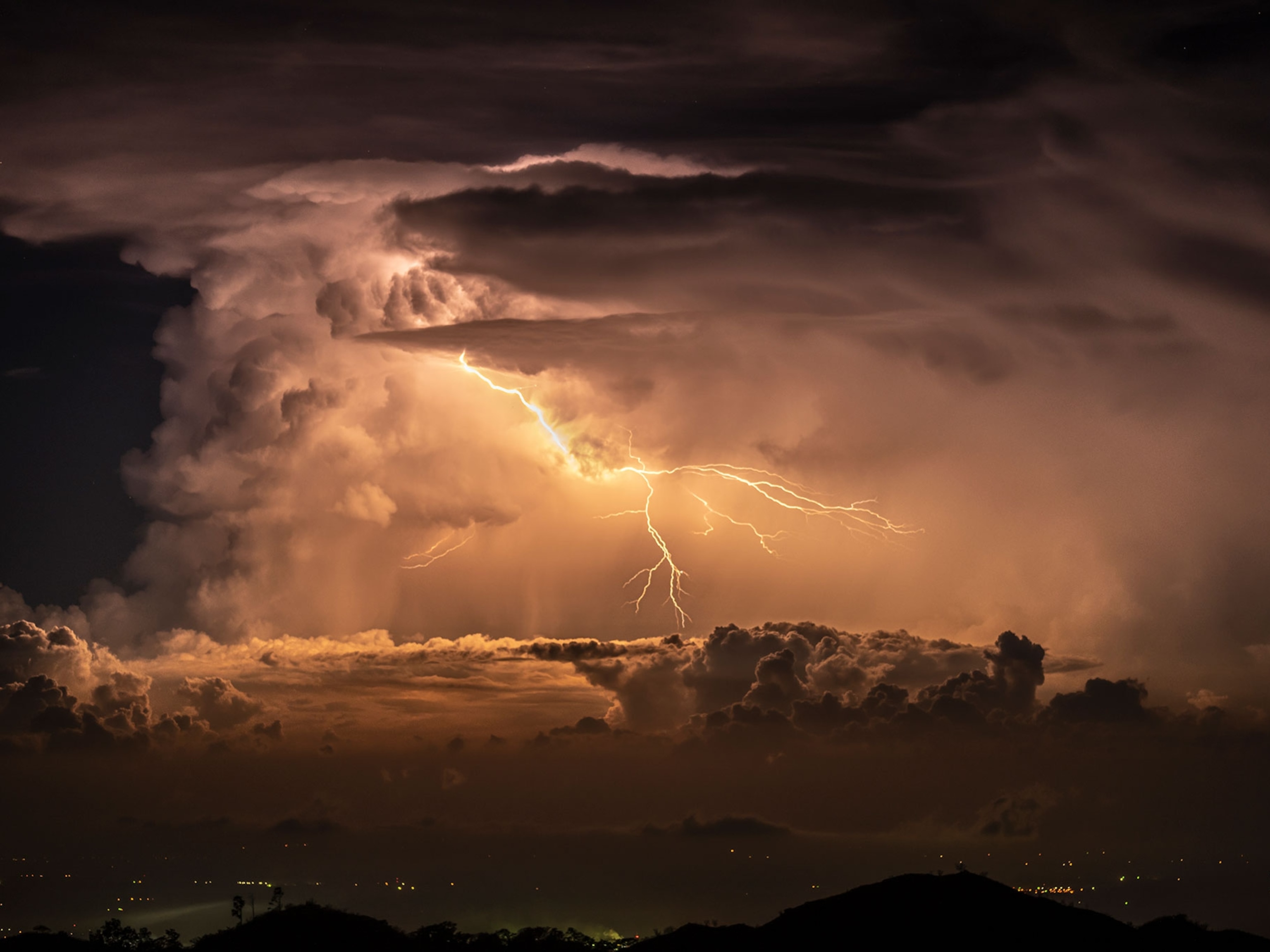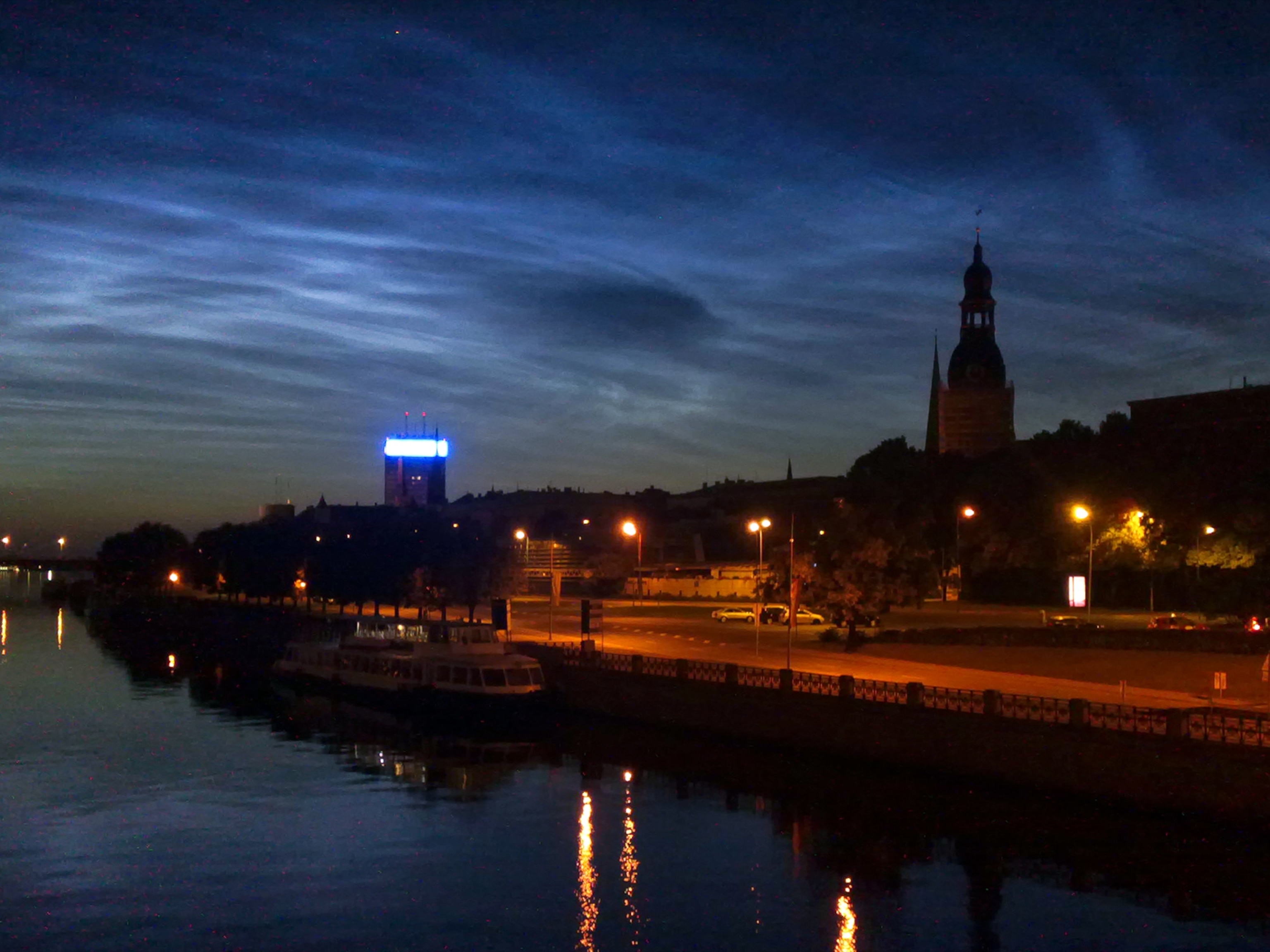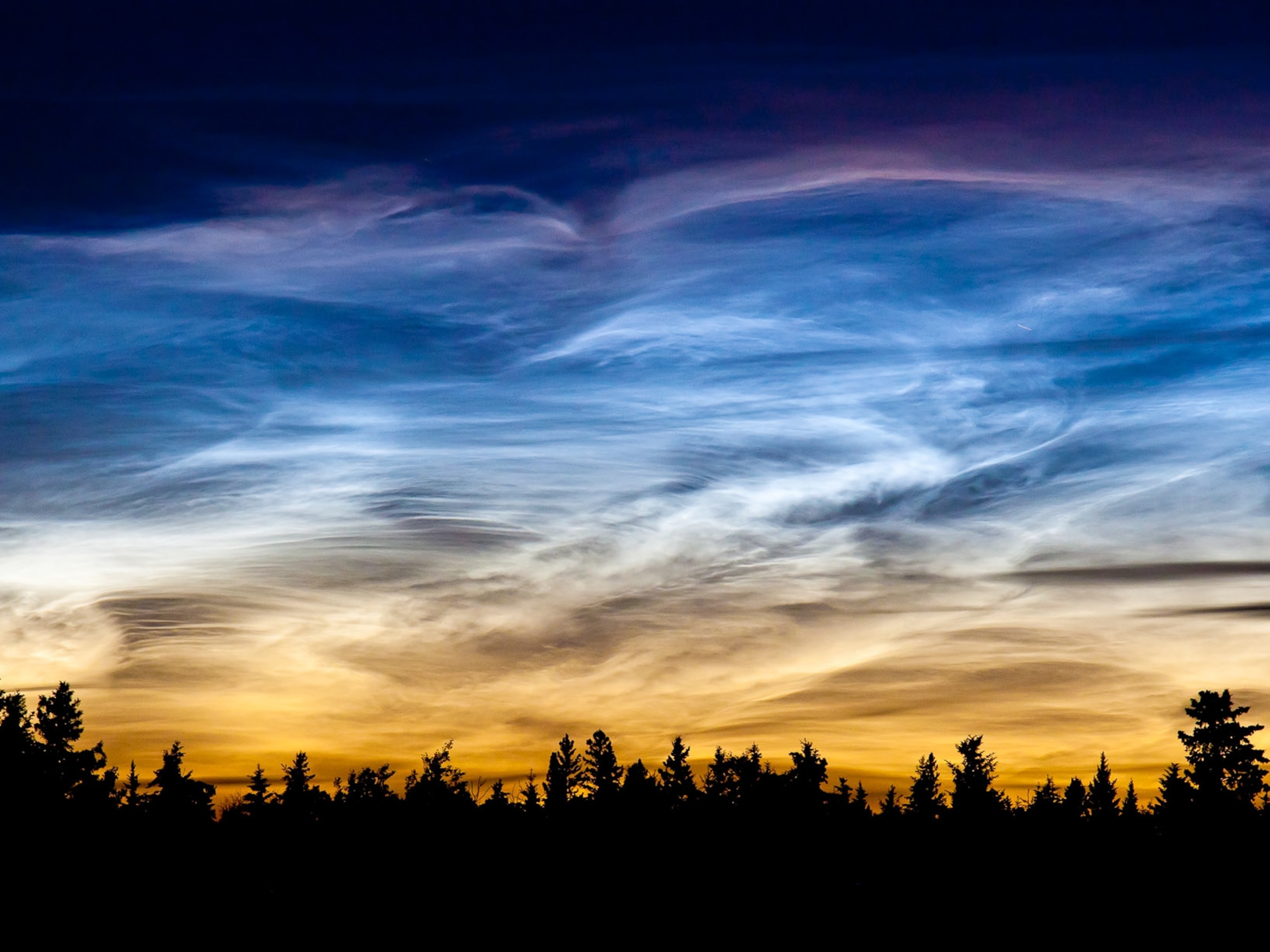
New Science Reveals Secrets of Night-Shining Crystal Clouds
National Geographic Your Shot photographs depict the haunting beauty of noctilucent clouds. New observations reveal their secrets.
Electric-blue wisps streaking the sky, noctilucent clouds shine after sunset, gleaming with icy crystals. (See: "Pictures: First Night-Shining Clouds of 2012.")
After first noting them in 1885, scientists have long tracked these "night-shining" clouds hanging on the edge of space some 51 miles (83 kilometers) high in the sky. (Regular clouds top out at around 10 miles [16 kilometers] high.) They glow in the night sky after sunset.
Now, scientists led by Michael Gerding of the Leibniz Institute of Atmospheric Physics in Kuehlungsborn, Germany, report on 100 hours of LIDAR (light detection and ranging) observations of the clouds at temperate latitudes. The three-year observations explain the sky-high schedules of the clouds, as detailed in a report in the journal Geophysical Research Letters.
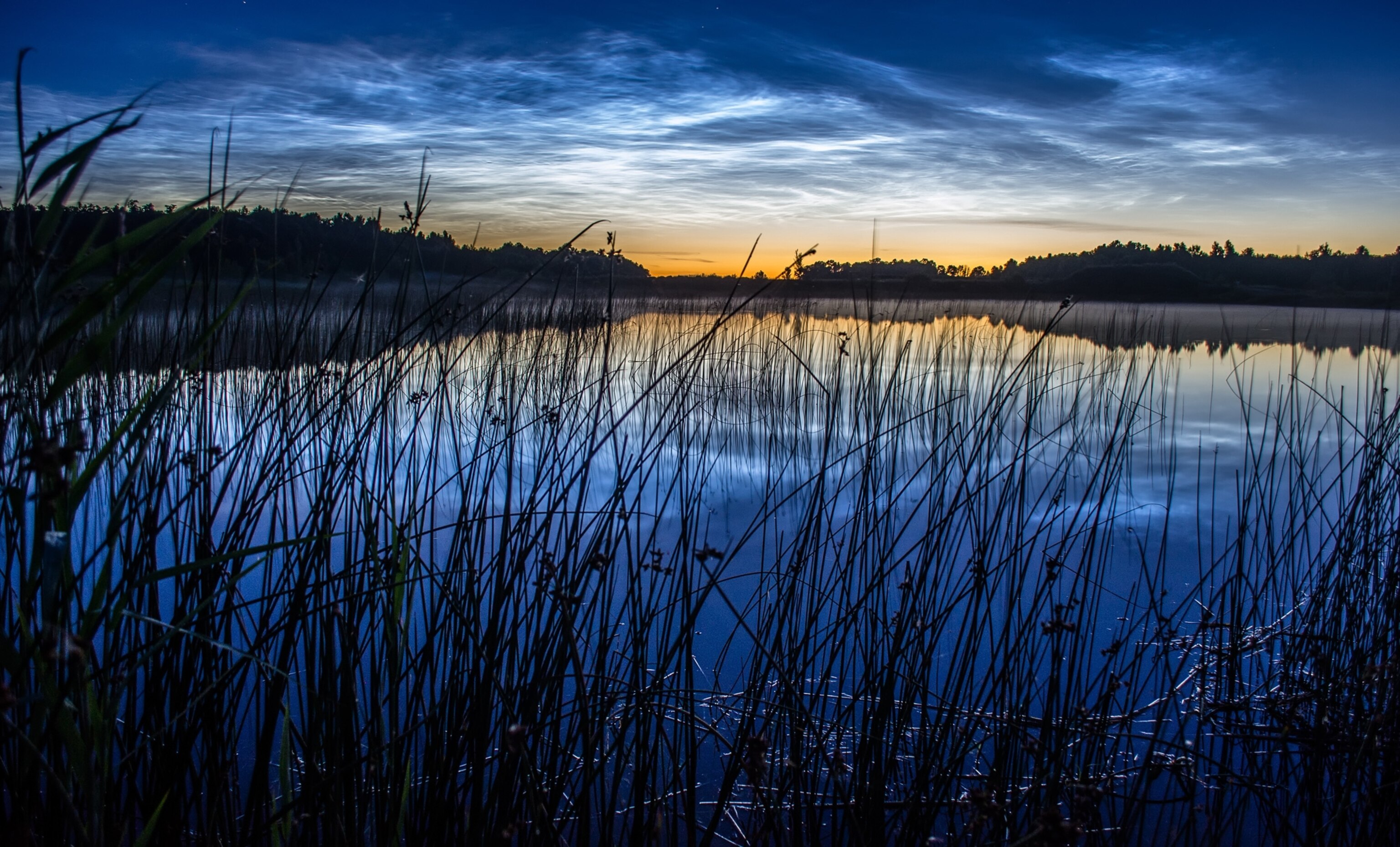
Summertime comes and the night-shining clouds are easy. Taking advantage of the appearance of noctilucent clouds in temperate climes during the season, the German research team tracked the clouds with LIDAR, a laser-aided way to map measurements.
The clouds, made of bands of ice and methane crystals, occur most often around the Poles. Previously, the clouds had only been measured by satellites at temperate latitudes. Although the clouds form during the summer, they hang high at the top of the atmosphere, where temperatures are around –180 degrees Fahrenheit (–118 degrees Celsius).
The LIDAR measurements revealed the times when the clouds were most frequent and the weather conditions that drove their appearance.
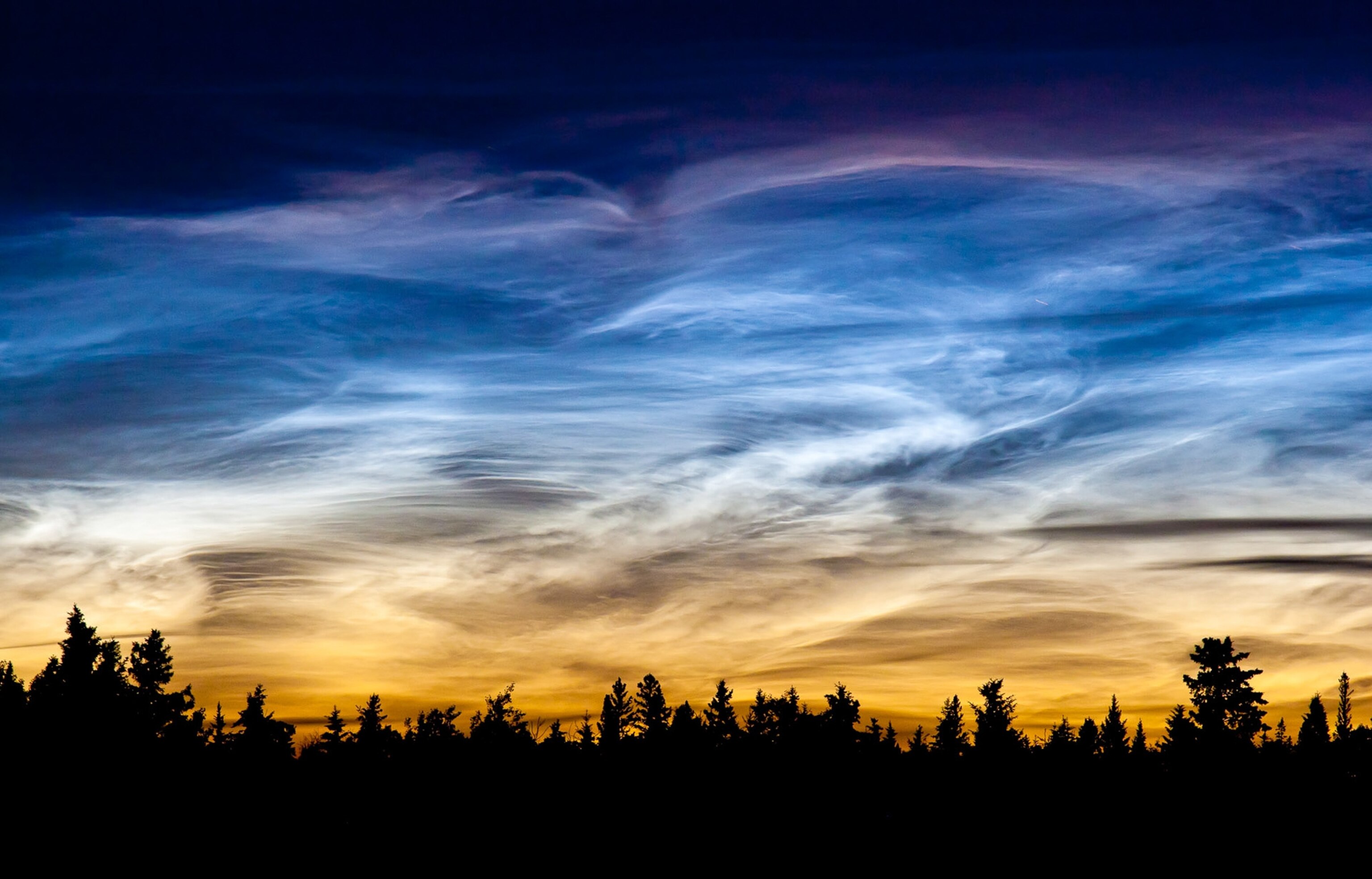
High in the sky, subtle temperature differences driven by "tidal" shifts in atmospheric heating seem tied to the appearance of the clouds.
On average, when temperatures on Earth were about 18 degrees Fahrenheit (10 degrees Celsius), the noctilucent clouds were more likely to appear, according to the study.
Polar winds at high altitude also made the clouds more likely to appear over temperate skies. "The longer the air comes from the pole, the higher the chance" of [noctilucent] clouds, the study said.
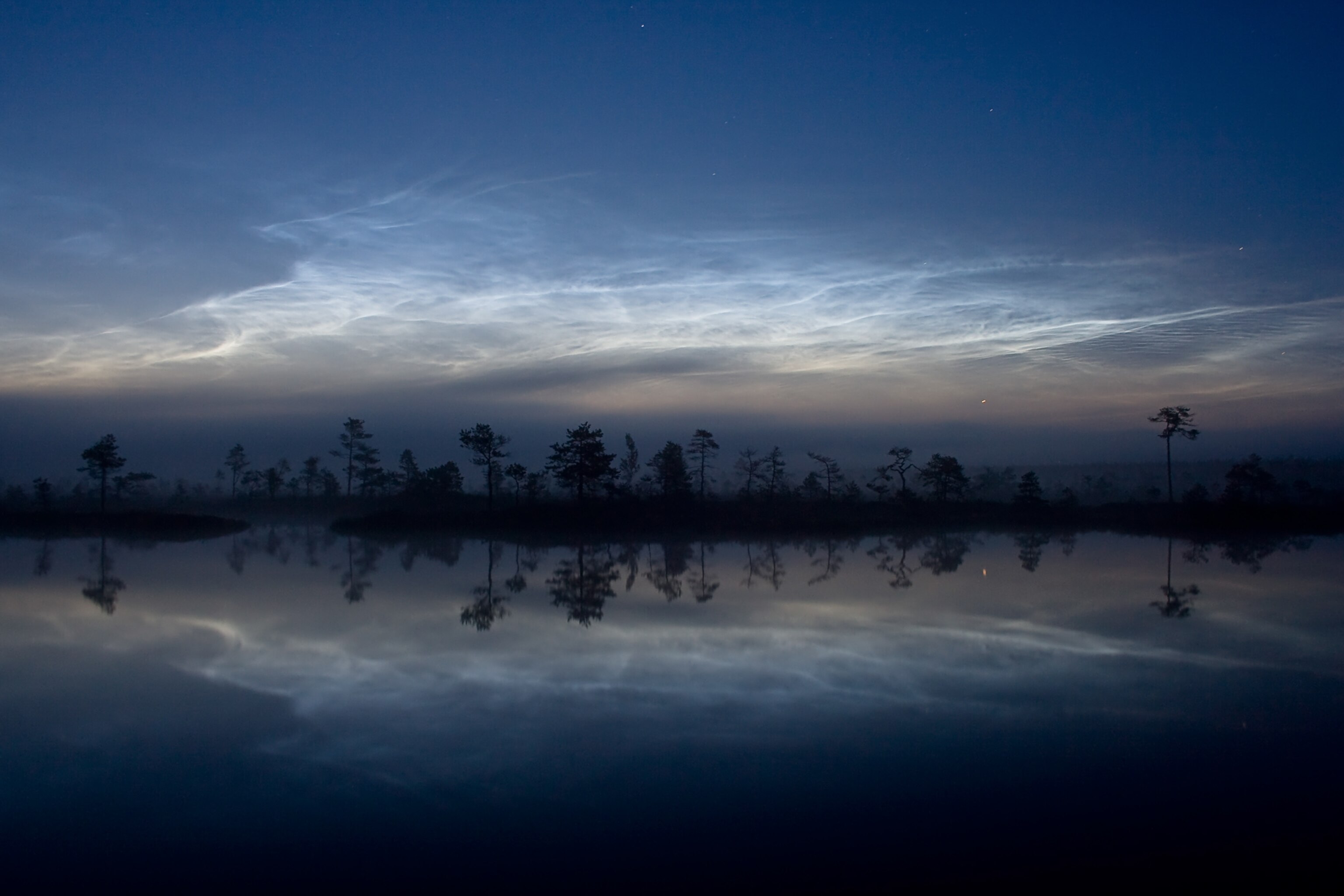
The study found that the noctilucent clouds peaked at around 4 a.m., when they appeared about 15 percent of the time. A smaller peak came in the evening around 6 p.m., local time.
The researchers looked at the clouds during summer from 2010 to 2013. The pioneering studies of noctilucent clouds, done in 1885, examined clouds thought to have been seeded by dust blasted out of the powerful Krakatoa volcano eruption three years earlier.
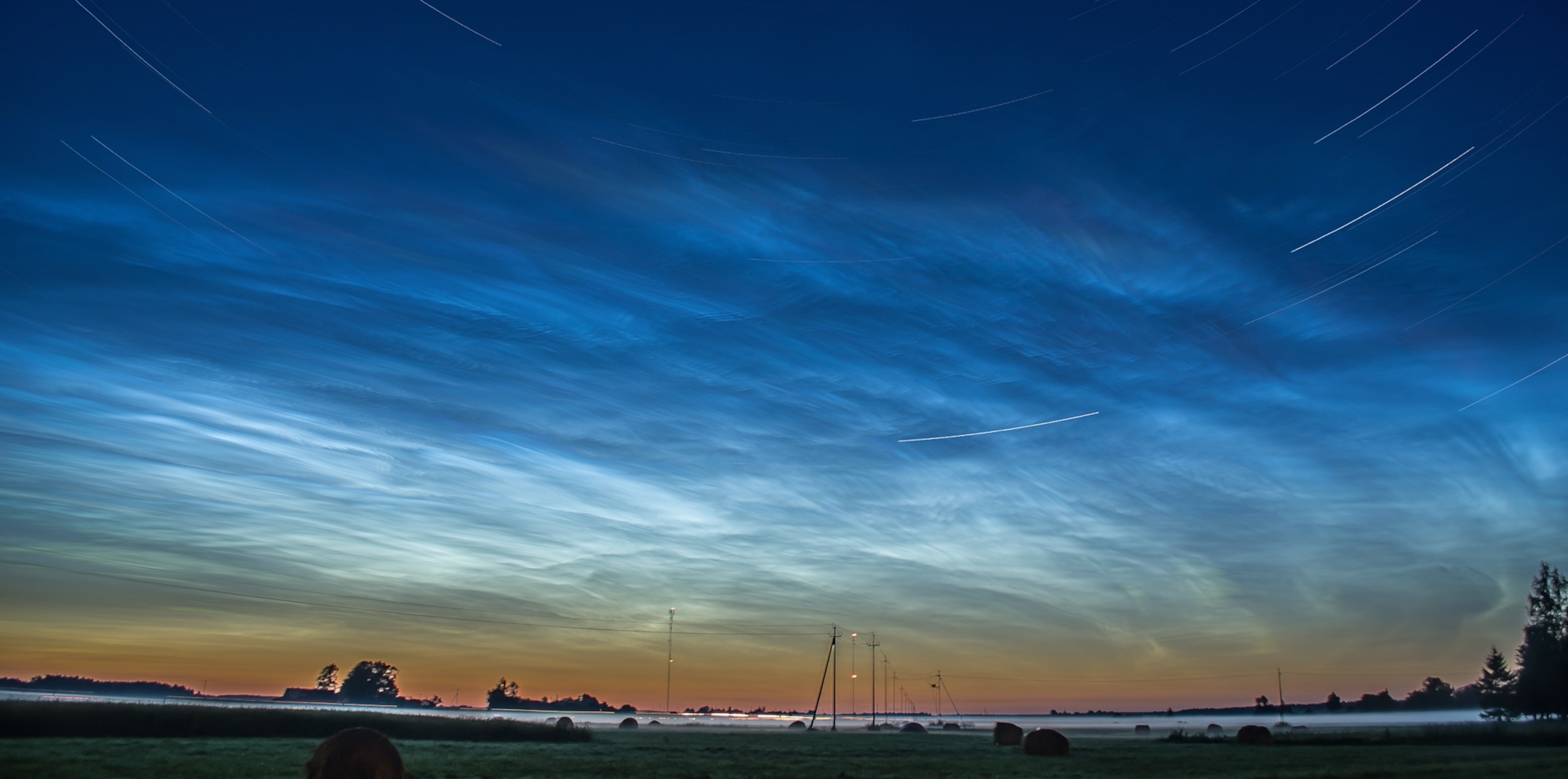
The brightness of noctilucent clouds increased in their peak hours, not surprisingly.
But the clouds stayed bright as night wore on, before dimming dramatically around midnight.
Since the clouds are believed to be made partly of methane ice crystals, they are sometimes seen as a bellwether for greenhouse gases, a major player in climate change.
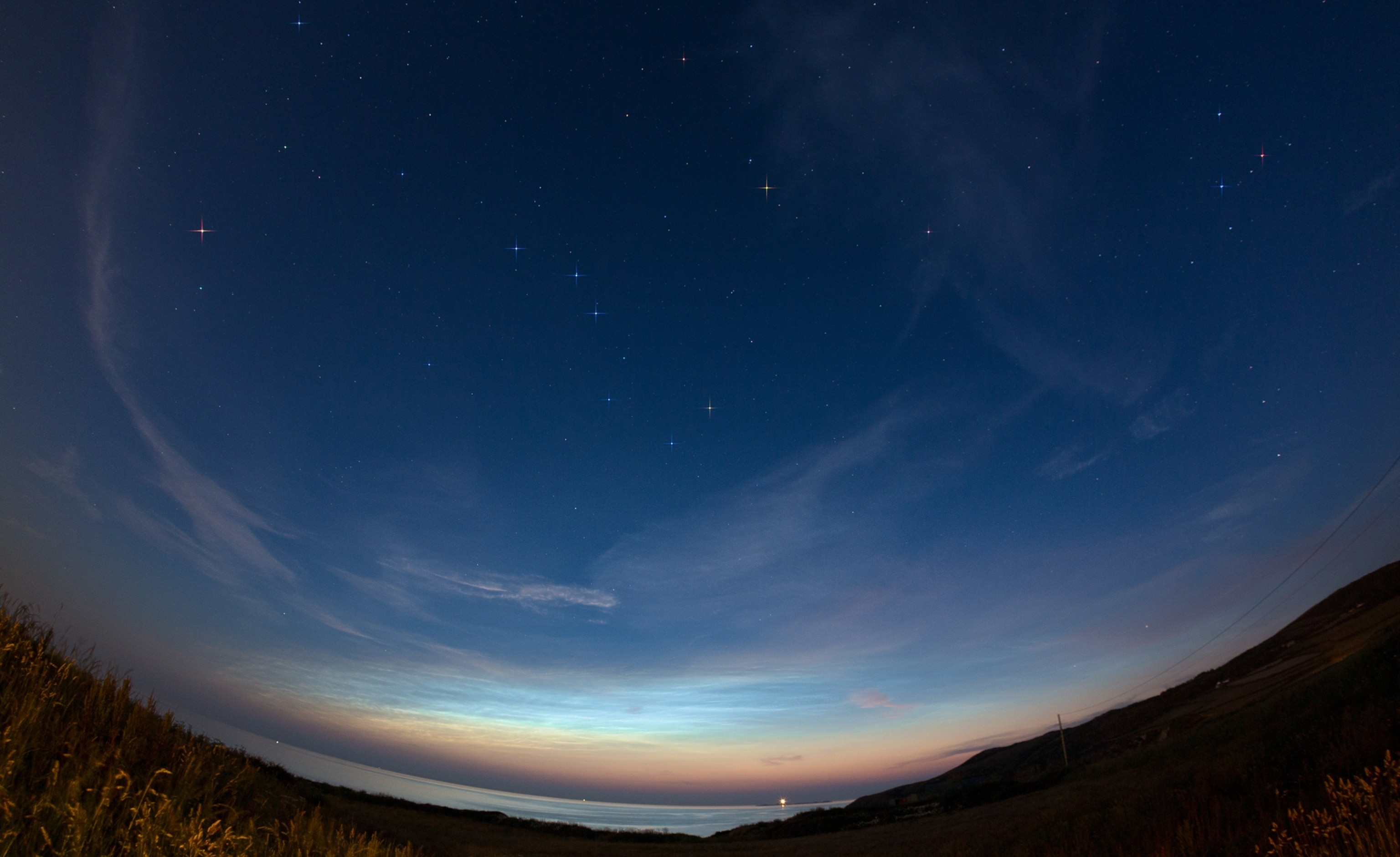
At the top of the atmosphere, the combination of dry and cold air explains the crystallization that conjures the clouds.
Captured from wetter air headed northward during the summer, the cloud crystals are caught and frozen at the edge of space.
These photos were submitted to Your Shot. Check out the new and improved website, where you can share photos, take part in assignments, lend your voice to stories, and connect with fellow photographers from around the globe. Contribute your photos of space by using #cosmos when you upload your images.

